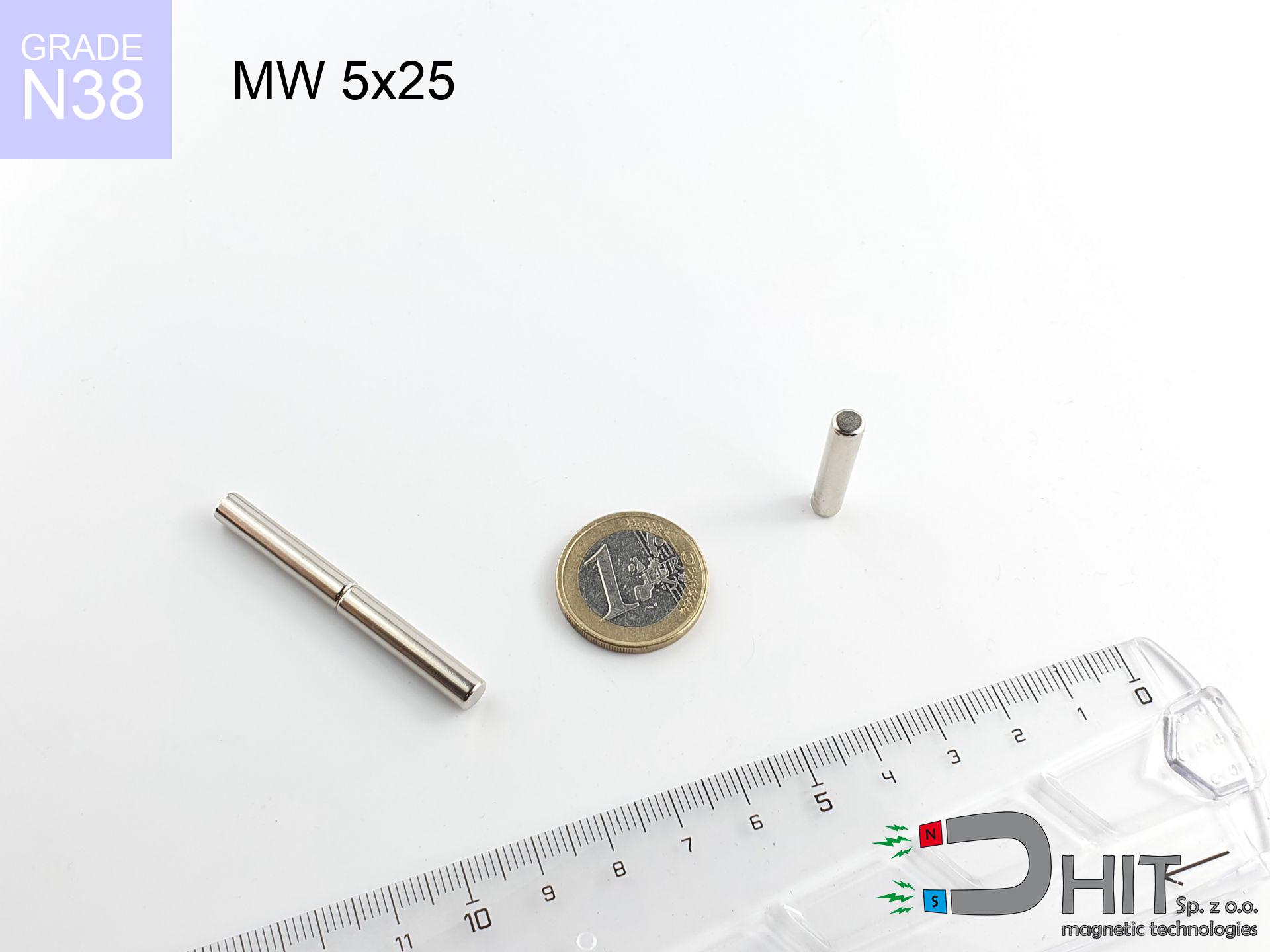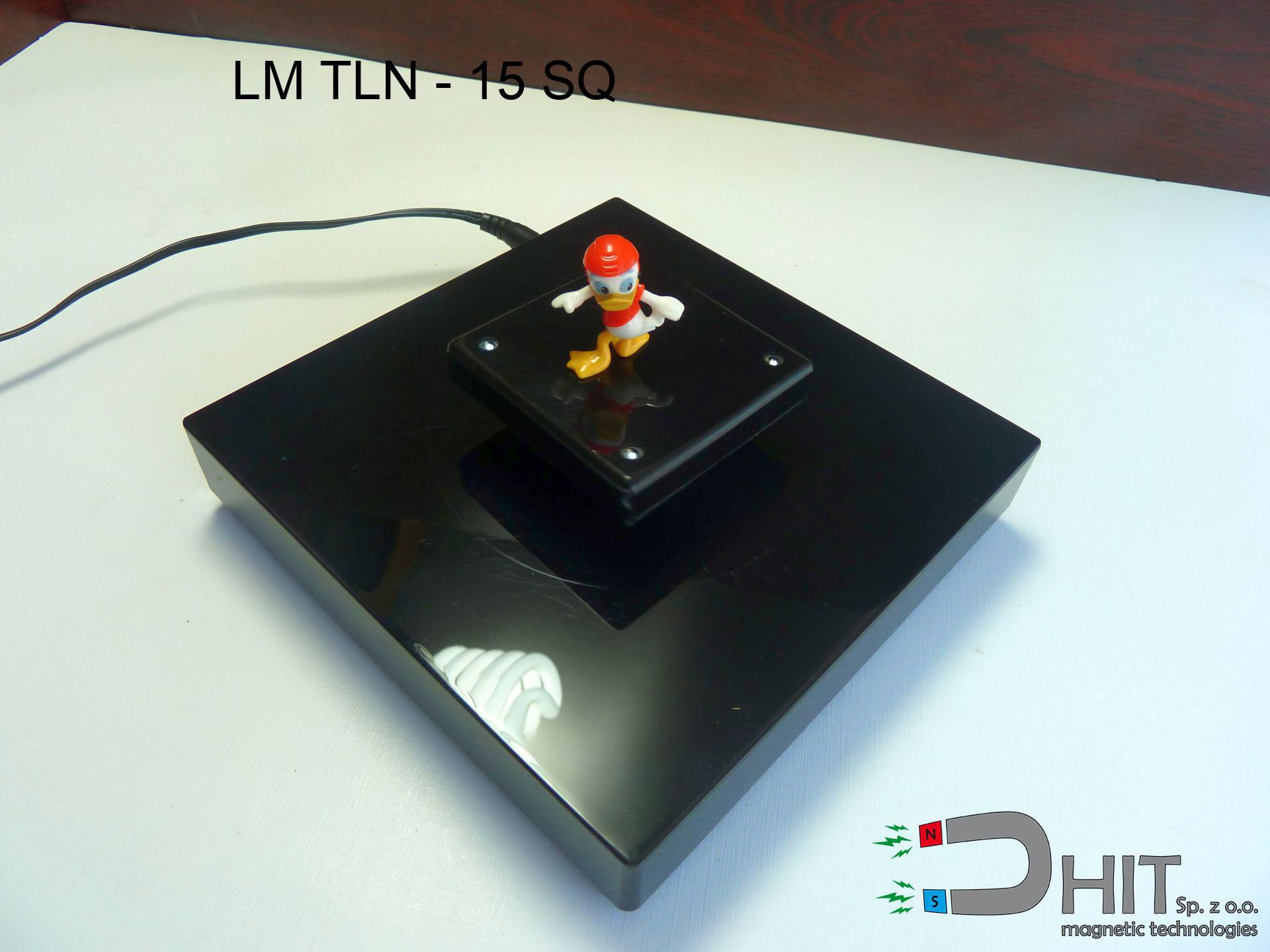SM 25x275 [2xM8] / N52 - magnetic separator
magnetic separator
Catalog no 130372
GTIN/EAN: 5906301813200
Diameter Ø
25 mm [±1 mm]
Height
275 mm [±1 mm]
Weight
1060 g
Magnetic Flux
~ 8 500 Gauss [±5%]
836.40 ZŁ with VAT / pcs + price for transport
680.00 ZŁ net + 23% VAT / pcs
bulk discounts:
Need more?
Call us now
+48 888 99 98 98
alternatively send us a note by means of
form
through our site.
Weight and structure of a magnet can be analyzed on our
online calculation tool.
Same-day shipping for orders placed before 14:00.
Product card - SM 25x275 [2xM8] / N52 - magnetic separator
Specification / characteristics - SM 25x275 [2xM8] / N52 - magnetic separator
| properties | values |
|---|---|
| Cat. no. | 130372 |
| GTIN/EAN | 5906301813200 |
| Production/Distribution | Dhit sp. z o.o. |
| Country of origin | Poland / China / Germany |
| Customs code | 85059029 |
| Diameter Ø | 25 mm [±1 mm] |
| Height | 275 mm [±1 mm] |
| Weight | 1060 g |
| Material Type | Stainless steel AISI 304 / A2 |
| Magnetic Flux | ~ 8 500 Gauss [±5%] |
| Size/Mount Quantity | M8x2 |
| Polarity | circumferential - 10 poles |
| Casing Tube Thickness | 1 mm |
| Manufacturing Tolerance | ±1 mm |
Magnetic properties of material N52
| properties | values | units |
|---|---|---|
| remenance Br [min. - max.] ? | 14.2-14.7 | kGs |
| remenance Br [min. - max.] ? | 1420-1470 | mT |
| coercivity bHc ? | 10.8-12.5 | kOe |
| coercivity bHc ? | 860-995 | kA/m |
| actual internal force iHc | ≥ 12 | kOe |
| actual internal force iHc | ≥ 955 | kA/m |
| energy density [min. - max.] ? | 48-53 | BH max MGOe |
| energy density [min. - max.] ? | 380-422 | BH max KJ/m |
| max. temperature ? | ≤ 80 | °C |
Physical properties of sintered neodymium magnets Nd2Fe14B at 20°C
| properties | values | units |
|---|---|---|
| Vickers hardness | ≥550 | Hv |
| Density | ≥7.4 | g/cm3 |
| Curie Temperature TC | 312 - 380 | °C |
| Curie Temperature TF | 593 - 716 | °F |
| Specific resistance | 150 | μΩ⋅cm |
| Bending strength | 250 | MPa |
| Compressive strength | 1000~1100 | MPa |
| Thermal expansion parallel (∥) to orientation (M) | (3-4) x 10-6 | °C-1 |
| Thermal expansion perpendicular (⊥) to orientation (M) | -(1-3) x 10-6 | °C-1 |
| Young's modulus | 1.7 x 104 | kg/mm² |
Table 1: Rod construction
SM 25x275 [2xM8] / N52
| Parameter | Value | Description / Unit |
|---|---|---|
| Diameter (Ø) | 25 | mm |
| Total length | 275 | mm (L) |
| Active length | 239 | mm |
| Section count | 10 | modules |
| Dead zone | 36 | mm (2x 18mm starter) |
| Weight (est.) | ~1026 | g |
| Active area | 188 | cm² (Area) |
| Housing material | AISI 304 | 1.4301 (Inox) |
| Surface finish | Ra < 0.8 µm | Polished |
| Temp. class | 80°C | Standard (N) |
| Force loss (at max °C) | -12.8% | Reversible loss (physics) |
| Force (calculated) | 18.1 | kg (theor.) |
| Induction (surface) | ~8 500 | Gauss (Max) |
Chart 2: Field profile (10 sections)
Chart 3: Temperature performance
Material specification
| iron (Fe) | 64% – 68% |
| neodymium (Nd) | 29% – 32% |
| boron (B) | 1.1% – 1.2% |
| dysprosium (Dy) | 0.5% – 2.0% |
| coating (Ni-Cu-Ni) | < 0.05% |
Environmental data
| recyclability (EoL) | 100% |
| recycled raw materials | ~10% (pre-cons) |
| carbon footprint | low / zredukowany |
| waste code (EWC) | 16 02 16 |
Other offers
Strengths as well as weaknesses of Nd2Fe14B magnets.
Pros
- They virtually do not lose strength, because even after 10 years the decline in efficiency is only ~1% (according to literature),
- Neodymium magnets remain highly resistant to loss of magnetic properties caused by magnetic disturbances,
- The use of an shiny layer of noble metals (nickel, gold, silver) causes the element to be more visually attractive,
- Magnetic induction on the working layer of the magnet is extremely intense,
- Made from properly selected components, these magnets show impressive resistance to high heat, enabling them to function (depending on their form) at temperatures up to 230°C and above...
- Considering the potential of accurate shaping and adaptation to custom projects, magnetic components can be modeled in a wide range of forms and dimensions, which makes them more universal,
- Huge importance in innovative solutions – they are used in magnetic memories, drive modules, medical devices, and industrial machines.
- Thanks to concentrated force, small magnets offer high operating force, in miniature format,
Weaknesses
- To avoid cracks under impact, we suggest using special steel holders. Such a solution protects the magnet and simultaneously increases its durability.
- Neodymium magnets lose strength when exposed to high temperatures. After reaching 80°C, many of them experience permanent weakening of strength (a factor is the shape as well as dimensions of the magnet). We offer magnets specially adapted to work at temperatures up to 230°C marked [AH], which are very resistant to heat
- Due to the susceptibility of magnets to corrosion in a humid environment, we suggest using waterproof magnets made of rubber, plastic or other material resistant to moisture, when using outdoors
- We suggest a housing - magnetic holder, due to difficulties in realizing threads inside the magnet and complex shapes.
- Possible danger related to microscopic parts of magnets pose a threat, if swallowed, which is particularly important in the aspect of protecting the youngest. Furthermore, tiny parts of these magnets are able to disrupt the diagnostic process medical when they are in the body.
- With budget limitations the cost of neodymium magnets is a challenge,
Lifting parameters
Highest magnetic holding force – what affects it?
- using a plate made of low-carbon steel, acting as a ideal flux conductor
- whose transverse dimension is min. 10 mm
- characterized by even structure
- without any clearance between the magnet and steel
- for force acting at a right angle (pull-off, not shear)
- at temperature room level
Practical lifting capacity: influencing factors
- Space between magnet and steel – even a fraction of a millimeter of separation (caused e.g. by veneer or dirt) diminishes the pulling force, often by half at just 0.5 mm.
- Force direction – declared lifting capacity refers to detachment vertically. When slipping, the magnet holds much less (typically approx. 20-30% of maximum force).
- Metal thickness – the thinner the sheet, the weaker the hold. Magnetic flux passes through the material instead of converting into lifting capacity.
- Material composition – different alloys reacts the same. High carbon content weaken the interaction with the magnet.
- Smoothness – ideal contact is obtained only on polished steel. Any scratches and bumps reduce the real contact area, reducing force.
- Temperature – heating the magnet causes a temporary drop of induction. It is worth remembering the thermal limit for a given model.
Lifting capacity testing was performed on a smooth plate of optimal thickness, under perpendicular forces, however under shearing force the lifting capacity is smaller. Additionally, even a slight gap between the magnet’s surface and the plate decreases the load capacity.
Warnings
Power loss in heat
Monitor thermal conditions. Exposing the magnet above 80 degrees Celsius will ruin its properties and strength.
Electronic devices
Equipment safety: Neodymium magnets can ruin payment cards and sensitive devices (pacemakers, hearing aids, mechanical watches).
Crushing force
Large magnets can crush fingers in a fraction of a second. Do not place your hand between two strong magnets.
Fragile material
NdFeB magnets are sintered ceramics, which means they are prone to chipping. Impact of two magnets leads to them cracking into small pieces.
Dust is flammable
Combustion risk: Neodymium dust is explosive. Avoid machining magnets without safety gear as this risks ignition.
Metal Allergy
Warning for allergy sufferers: The Ni-Cu-Ni coating consists of nickel. If skin irritation appears, cease working with magnets and wear gloves.
Threat to navigation
Navigation devices and mobile phones are highly sensitive to magnetic fields. Close proximity with a powerful NdFeB magnet can permanently damage the internal compass in your phone.
Powerful field
Use magnets with awareness. Their immense force can shock even professionals. Be vigilant and do not underestimate their force.
Adults only
Strictly store magnets out of reach of children. Risk of swallowing is significant, and the effects of magnets connecting inside the body are very dangerous.
Warning for heart patients
Health Alert: Strong magnets can turn off pacemakers and defibrillators. Do not approach if you have medical devices.

![Separation magnetic rod SM 25x275 [2xM8] / N52 Separation magnetic rod SM 25x275 [2xM8] / N52](https://cdn3.dhit.pl/graphics/banners/magnet.webp)
![SM 25x275 [2xM8] / N52 - magnetic separator](https://cdn3.dhit.pl/graphics/products/sm-25x275-2xm8-vih.jpg)


![SM 32x500 [2xM8] / N52 - magnetic separator SM 32x500 [2xM8] / N52 - magnetic separator](https://cdn3.dhit.pl/graphics/products/sm-32x500-2xm8-rub.jpg)


